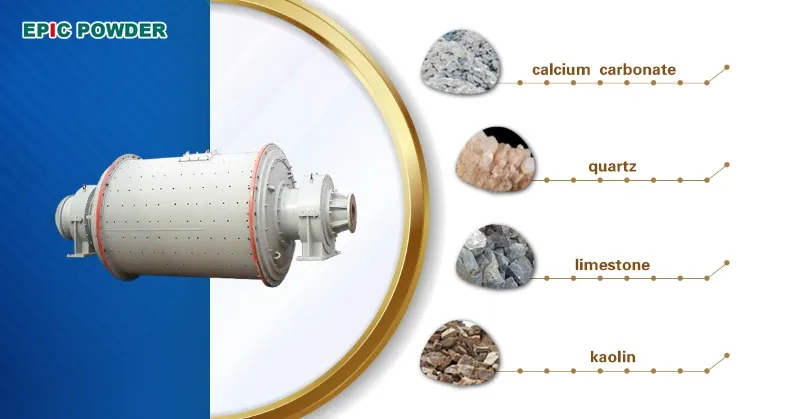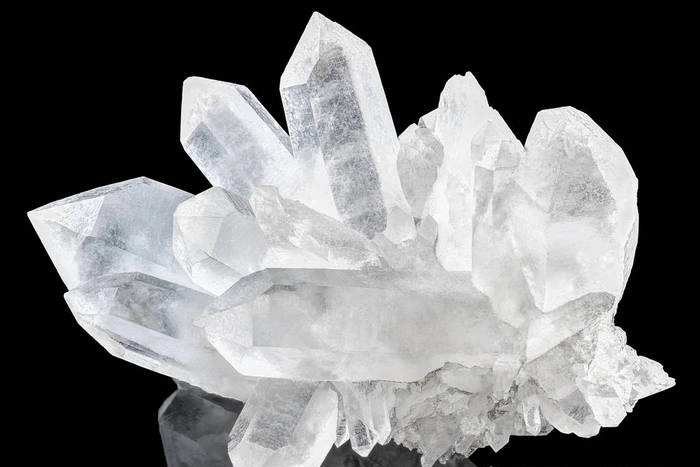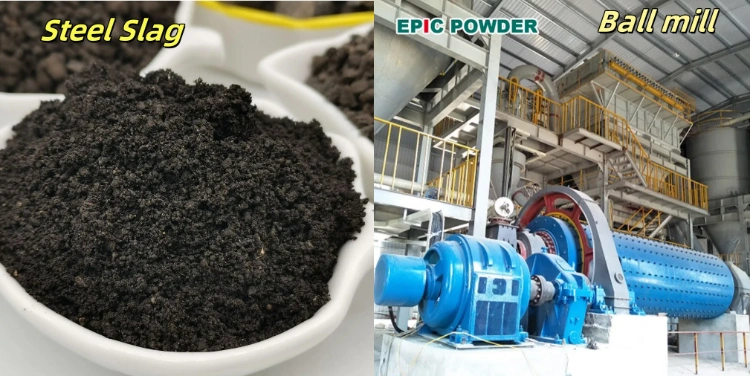Mineral processing aims to remove impurities and improve product purity, while also reducing particle size to varying degrees. Currently, crushing, grinding, and classification technologies and equipment have reached a new level, meeting the needs of most raw materials in various industries, including non-metallic minerals, cement, ceramics, chemicals, coal powder, metallic minerals, tailings, and waste solid materials.

Calcium Carbonate
The production of heavy calcium carbonate minerals mainly involves grinding and surface modification. Dry processing is generally used to produce heavy calcium carbonate products with a d97 ≥ 3-5 μm. Crushing equipment includes Raymond mills, impact crushers, dry stirred mills, air jet mills, air classifier mills, ring-roll mills, vibration mills, and ball mills.
Quartz
Quartz is hard and abrasion-resistant. When fine grinding is required, relying solely on the grinding medium is often insufficient to achieve the desired fineness. Therefore, during quartz grinding, a certain amount of grinding aids is often added to improve the grinding effect.

Silicon Micro Powder
The production of silicon micro powder primarily uses physical grinding methods, which can be divided into dry and wet processes. The dry process is simpler and more cost-effective, and most silicon micro powder production companies adopt this method. For ultra-fine particles below 5 microns that require surface treatment, the wet process is more suitable.
Dolomite
Dolomite minerals has a layered structure and a hardness of 3.5-4. It is typically broken using jaw crushers, hammer crushers, and impact crushers. After screening and grading, dolomite particles of a certain size are obtained. Fine crushing and grinding are commonly carried out using roller presses, hammer mills, stirred mills, and air jet mills.
Ceramic Raw Materials
Currently, most ceramic manufacturers use ball milling processes for raw material preparation. Typical setups include intermittent mills combined with intermittent mills, intermittent ball mills combined with continuous ball mills, and vertical mills combined with either intermittent or continuous mills.
Cement
Most cement plants currently use a combined grinding system consisting of roller presses and ball mills. The grinding system can be a pre-grinding system, a combined grinding system, or a semi-finish (dual-loop) grinding system. The choice of process flow mainly depends on the relative sizes of the roller press and ball mill.
Limestone

Limestone is a key raw material for producing cement, coarse and fine aggregates for concrete, and lime. Its crushing and grinding are typically done using dry processes, with the specific process selected based on the application field.
Fly Ash
The particle size and morphology of fly ash determine its application performance. Selecting the appropriate grinding process based on the physical and chemical characteristics of fly ash and the required product fineness is an important factor influencing the economic value and processing cost of fly ash.
Steel Slag

Steel slag is an industrial waste produced during steelmaking in blast furnaces and electric arc furnaces, primarily composed of calcium silicate, calcium ferrite, and other compounds. Grinding steel slag into fine particles for use as a cement admixture or concrete additive is an important way to realize the high-value utilization of steel slag.
Blast Furnace Slag
Blast furnace slag is a byproduct from the blast furnace ironmaking process, with relatively high potential activity. When ground to a certain fineness, it can replace cement in concrete production, contributing to the production of green synthetic cement. It is widely used in regular concrete and is an essential mineral admixture in high-performance concrete.
Epic Powder
Epic Powder, with its advanced grinding technologies and customized equipment solutions, is committed to enhancing the efficiency and precision of minerals processing. Whether it’s calcium carbonate, quartz, or other minerals, Epic Powder’s cutting-edge machinery, including air jet mills, ball mills, and classifier systems, ensures superior particle size control and high-quality product outcomes. By integrating innovative grinding and surface modification techniques, Epic Powder continues to lead the way in optimizing performance across various industries, delivering tailored solutions for the unique challenges of mineral processing.
